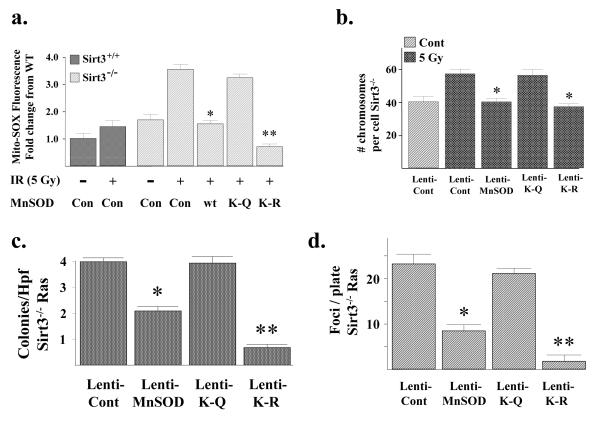Figure 6. The MnSODK122-R mutant reverses the increase in IR-induced superoxide levels and genomic instability in the primary or Ras transformed Sirt3−/− MEFs.
(a) Wild-type and Sirt3−/− MEFs were exposed to 5 Gy of IR and mitochondrial superoxide levels were determined by the addition of Mito-SOX (1 μM) to the cells. (b) The MnSODK122-R mutant prevents aneuploidy in Sirt3 knockout MEFs exposed to IR. Sirt3−/− MEFs were infected with a control lentivirus or lenti-MnSODwt, lenti-MnSODK122-Q, or lenti-MnSODK122-R and exposed to 5 Gy of IR. Whole-mount chromosomes were counted in a blinded fashion. Bars show the mean chromosome number per cell from 100 separate counts. (c-d) The MnSODK122-R mutant reverses the transformed phenotype in Sirt3−/− MEFs infected with Ras. The transformed Sirt3−/− Ras cells were transfected with the MnSOD lentiviruses outlined above, and (c) growth in soft agar and (d) spontaneous foci formation were determined as described above. For growth in soft agar, Sirt3−/− Myc/Ras cells were seeded and colonies were stained with methylene blue after 12 days and counted. Results for all the panels in this figure are the mean of at least three separate experiments and error bars represent one standard deviation. * indicates P < 0.05 and ** indicates P < 0.01 by t-test.

